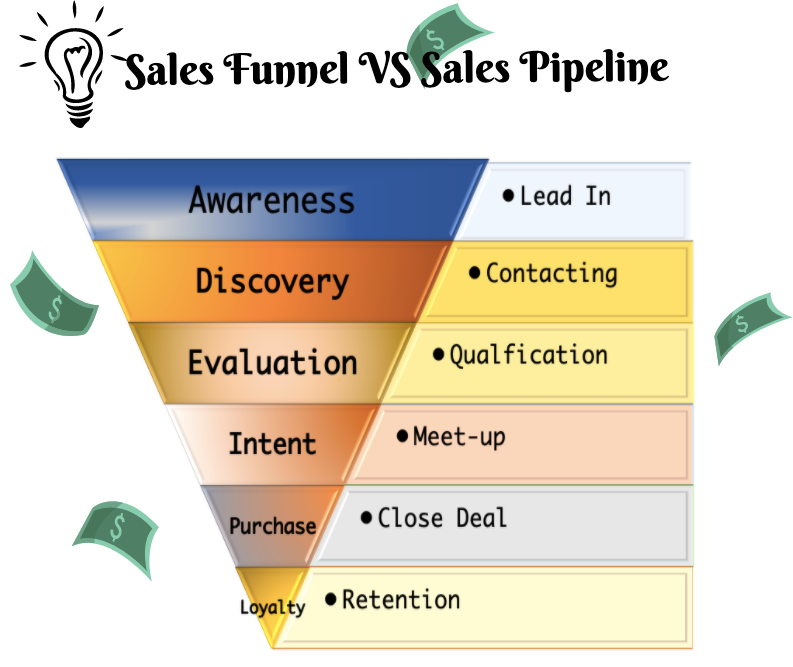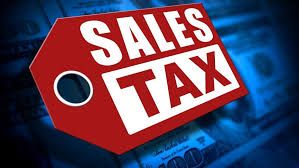Leads and prospects are everywhere - some may be browsing through your company website, while others are initiating conversation and are almost ready to purchase.
As a salesperson, it is your job to get their contact information, measure the sales volume they’ll be able to bring in, evaluate how likely it is they’ll make a purchase, and keep track of the stages that they go through until they become customers.
This is all done through a process known as the sales pipeline.
A clear, distinct sales pipeline enables you to track your potential customers from start to finish, close deals faster, and generate more revenue.
In this guide, you’ll learn everything you need to know about the sales pipeline, and how you can create an effective sales pipeline for your business.
Read along to learn about:
- What Is a Sales Pipeline?
- Benefits of the Sales Pipeline
- Sales Pipeline vs Sales Funnel
- What Are the Stages of a Sales Pipeline?
- 5 Tips for a Successful Sales Pipeline
- Build Your Sales Pipeline with Deskera Sales
What Is a Sales Pipeline?
A sales pipeline encompasses all the different stages that your prospects go through on their way to becoming customers. In simpler terms, a pipeline shows what deals a salesperson is currently handling and at what stage of the sales process these prospects are at.
A sales pipeline will typically contain the following metrics:
- The names of your potential buyers
- Number of qualified leads
- Costs of acquiring customers
- Marketing Qualified Leads (MQL) to Sales Qualified Leads (SQL) conversion rate
- The average length of the sales cycle
- Win and close rates
Through the sales pipeline, you can view which prospects are interacting with your business, how much time needs to be spent on each, and the likelihood of them becoming customers.
At the same time, as a business owner, you can use your sales pipeline to gain insight into your sales team’s performance and monitor how close they are to meeting their sales targets.
Now, manually handling your sales pipeline can be extremely difficult and time-consuming. Leads might slip away unknowingly and your sales team won’t be able to perform at the best of their abilities.
That’s why implementing a sales pipeline using Customer Relationship Software (CRM) is undoubtedly useful to streamline your sales processes. With CRM software, businesses gain the flexibility to customize the sales pipelines that fit their business industry, and all sales insights are updated in real-time, available at any time.
Benefits of the Sales Pipeline
Here are a few benefits of implementing a sales pipeline in your organization:
1. A Clear Picture of the Sales Process
The sales pipelines in your CRM software are generally the reflection of your business sales processes. So, when you set up your sales pipeline, you’re creating a standard guideline for your sales representatives to follow. Sales reps can manage, track and oversee the progress of each deal without worrying about missing out on any of the deals.
2. Work Productivity and Efficiency
The next benefit of having a sales pipeline is that it helps to improve work productivity and efficiency. As deals are categorized based on their conversion rate in the pipeline, it enables sales reps to focus on the deals with a higher conversion rate. The sales team can save time by focusing less on deals with a smaller conversion rate.
3. Close Deals Faster
CRM software enables businesses to store their information on the cloud. By storing business data on the cloud, a business can cut down its manual work process. Improved productivity and efficiency help sales reps to close deals faster and increase the overall company's sales revenue.
4. Help Track Team's Progress
For the deals to move on to the next stage, the required list of actions must be taken by the sales reps. The sales pipeline provides superb transparency and visibility to the managers and business owners. Hence, the sales managers can set realistic sales targets and ensure that the sales reps are working aggressively towards closing the deals.
Sales Pipeline vs Sales Funnel

The sales funnel and sales pipeline are often used interchangeably and misunderstood to be the same concept. And although the two are shaped alike (in a declined top-to-end funnel), the terms represent very different concepts.
The sales pipeline categorizes customers depending on where they are in the sales cycle, and the actions you’ve taken as a salesperson to nurture them. So, if a sales rep has had only a few email conversations with a potential customer, then that customer would be marked as part of the “lead qualification” stage of the pipeline. This means that the salesperson now has enough information to evaluate whether or not the lead qualifies as a good lead, and how much time should be spent on them.
Whereas the sales funnel is built based on the perspective of your leads and prospects. The stages of a sales funnel are again, created from your sales process, but from the perspective of the buyer.
To illustrate, let’s take our previous example - a consumer emailing a business to gain more information about their services. Based on the sales funnel, this individual is qualified as part of the discovery stage. In the discovery stage, leads are interested in knowing more about your business and how you can address their specific needs. So, using this insight, instead of giving your lead a sales presentation, you email them with the information they require and adapt to their customer journey.
So, in short, the sales pipeline categorizes prospects from the actions of the seller. If there’s been initial contact - they’re in the process of becoming qualified prospects. If you’ve finished your sales pitch and you’re addressing objections - you’re close to winning a deal.
The sales funnel, on the other hand, describes what actions need to be taken depending on the buyer’s journey. If a lead is simply browsing through the website, they’re in the awareness stage of the funnel and are only looking for informative emails and blog posts. If a prospect is signing up for a demo, they’re in the intent stage, and interested in buying.
To learn more about the sales funnel, and to move qualified leads forward effectively, read our complete guide on the sales funnel stages.
What Are the Stages of a Sales Pipeline?
Every business builds and structures its own sales pipeline, depending on its industry, business size, and sales process.
With that being said, most companies keep track of their sales pipeline through the following six stages:
1. Lead-in
The sales pipeline starts with receiving a lead. This step may also be known as prospecting or finding prospective buyers who need what you’re selling.
Leads can be generated through social media, landing pages, blog posts, email marketing, paid ads, or any other marketing strategy. They might also come as referrals from previous customers, or from revisiting previous lost opportunities.
Whatever the case may be, it’s your job as a sales rep to capture these leads and categorize them according to how they came in contact with your business.
If you want to learn more about how you can track, manage, and nurture leads for your small business sales, head over to our full guide on lead management.
2. Contacting
Once you’ve received the lead's data, it’s time to make the first contact. The goal of this contact is to hopefully set up a more formal meeting in the near future.
This can be done through a variety of communication channels: email, phone call, direct message on social media. It all depends on where the lead is on their buyer journey. If a lead has requested a demo, submitted a query, or signed up for a free trial, it may be time for a phone call. But if a lead is still navigating your website and looking at the pricing an informative email could be the more appropriate way of reaching out.
3. Qualification
After you’ve made initial contact, and gained some more information on where your leads are at, it’s time to do some qualifying.
You’ll need to check if the products and services you offer suit your prospect’s needs, if they have the authority to buy, whether or not their budget allows it, as well as evaluate how desirable your product is to them.
For more information on the qualification process, you can check out our sales qualification guide.
4. Meet Up
The next step in the sales pipeline is your meetup. In your meetup, you have to give a presentation, which is a continuation of your former contact. The main goal of this pitch is to provide the prospect with as much valuable information as possible and convince them to purchase.
How you approach your presentation is customized to each prospect, however, it’s important to always touch upon your product, marketing plan, and business proposition.
At the end of your sales pitch, the buyer will likely have some objections - they might not like your pricing plan, they might point out a defect in your product Tos concern about the effectiveness of the good or service.
Don’t get discouraged! Make sure you keep the conversation friendly, listen to them all the way through, and plan answers for any reasons that your prospect might not be interested in or benefit from your product in advance.
5. Close the Deal
If everything else is done properly, closing the sale will come naturally. The customer will send a buy signal, such as asking questions about the payment terms, pulling out an order form, or bluntly saying that they’re ready to buy.
If that doesn’t happen, you’ll need to have a set of closing techniques up your sleeve, depending on the situation. So for instance, you could use an assumptive close, and speak in a manner that assumes the prospect will purchase. Consider, for example, saying “I’ll be sending the sales quote and contract details in a week”.
For more effective sales techniques that lead to a fast close, check out our guide on sales strategies.
6. Retention
The sales pipeline doesn’t end with closing a sale. You still need to follow up with your customers and make sure that they’re satisfied so that they continue to buy from your business. Few ways you can keep customers is by providing excellent customer service, listening to their complaints, offering rewards, loyalty programs, and personalized holiday or special occasion cards and emails.
To measure how many acquired customers stay within your business, you can use a measurement known as your customer retention rate.
In general, there are 3 data points that you need to gather to compute the customer retention rate:
- The number of the customers at the start of the period (S)
- Total number of the customers at the end of the period (E)
- Sum of new customers acquired during the period (N)
With this information, you can calculate customer retention by using the following formula:
Customer Retention Rate = (E-N) / S * 100
5 Tips For a Successful Sales Pipeline
1. Target the Right Prospects
Once leads start to come in, you must figure out who your ideal customer profile (ICP) is. This way, you can focus your efforts on the right deals.
Your ICP should describe the demographics of your target group, which include attributes such as age, gender, ethnicity, income, location, and more. These attributes can be found through analyzing the history of the business’ sales data, as well as looking at the competitor’s client testimonials to see which types of customers they’re targeting.
2. Nurture Leads
Not all leads will be ready to buy immediately. Many may remain hesitant and will take their time researching your business and learning more about what you have to offer. That’s why nurturing is incredibly important in moving your leads further down the sales cycle.
By looking at where in the sales funnel your potential buyers are, you can tailor programs and messages to their point of the journey. So, early-stage buyers still in the awareness, or discovery phase, are best targeted with blog posts and/or social media advertisements. Whereas other prospects, further down the funnel, need to be nurtured with one-to-one conversations, video conferences, and email marketing campaigns.
3. Review Your Pipeline Regularly
Try to keep your pipeline healthy by removing low-quality leads that won’t benefit from your product. If leads aren’t interacting with your business, or aren’t showing any buying signals for an extended time, remove them from your pipeline and put a focus on leads that have a higher conversion rate.
Don’t completely abandon these poor-quality deals, though. Keep them on a future-call list, and re-visit them regularly, every two to three months.
4. Reduce the Length of Your Selling Process
The longer your sales process, the less likely it is that you’ll win a deal. So, make sure to set a specific timeline for each deal, and create a concrete step-by-step plan on how you’ll handle each lead. Measure your previous sales data and understand how much time each step of the process usually takes. Don’t forget to also update your sales strategies periodically, and explore new methods that shorten your sales cycle.
5. Automate with CRM Software
The “magic ingredient” of a successful sales pipeline is sales automation through a Client Relationship Management (CRM) system. Visualizing the sales cycle will help you gain useful insights and more efficiently move sales across the pipeline. However, not every program is considered equal.
Look for software that includes the following features in their sales pipeline management:
- Cloud-based and automated systems
- Customizable features
- The use of visualization through graphs and reports
- Flexibility
Build Your Sales Pipeline with Deskera Sales
If you wish to create and customize your ideal sales pipeline with just a few clicks, you can start with Deskera Sales.
Deskera Sales is a CRM software that helps small to medium businesses build a sales pipeline that suits their business needs. On top of that, you can also create multiple customizable pipelines for different teams in the organization.
Once you have logged in to the CRM software, you can immediately view your Deskera Sales Dashboard.
Some of the main features you’ll be able to overview from the Deskera Sales Dashboard include: open and won deal statistics, contact reports, number of organizations and people you’ve been dealing with, upcoming activities, campaign statistics, task reminders, and much more.
Try the software out yourself by getting started with your completely free trial, right now! No credit card details necessary.
Key Takeaways
And that’s a wrap! We hope our guide helped you understand the basics of the sales pipeline, and how you can set up a sales pipeline for your business sales.
For a quick recap, here are some of the main points we’ve covered:
- The sales pipeline provides an overview of all the different stages that leads go through on their way to becoming customers.
- Some elements of the pipeline include the number of qualified leads, costs of acquiring customers, the average length of the sales cycle, win and close rates.
- The sales pipeline typically encompasses six main stages:
- Leads coming in
- Initial contact
- Qualifying leads
- Meeting up and giving a sales pitch
- Closing the sale
- Customer retention
- In order to set up an effective and successful sales pipeline, you have to target the right prospects, nurture your leads regularly, remove low-quality leads, find ways to reduce the selling process and use automation tools like CRM software.
Related Articles












